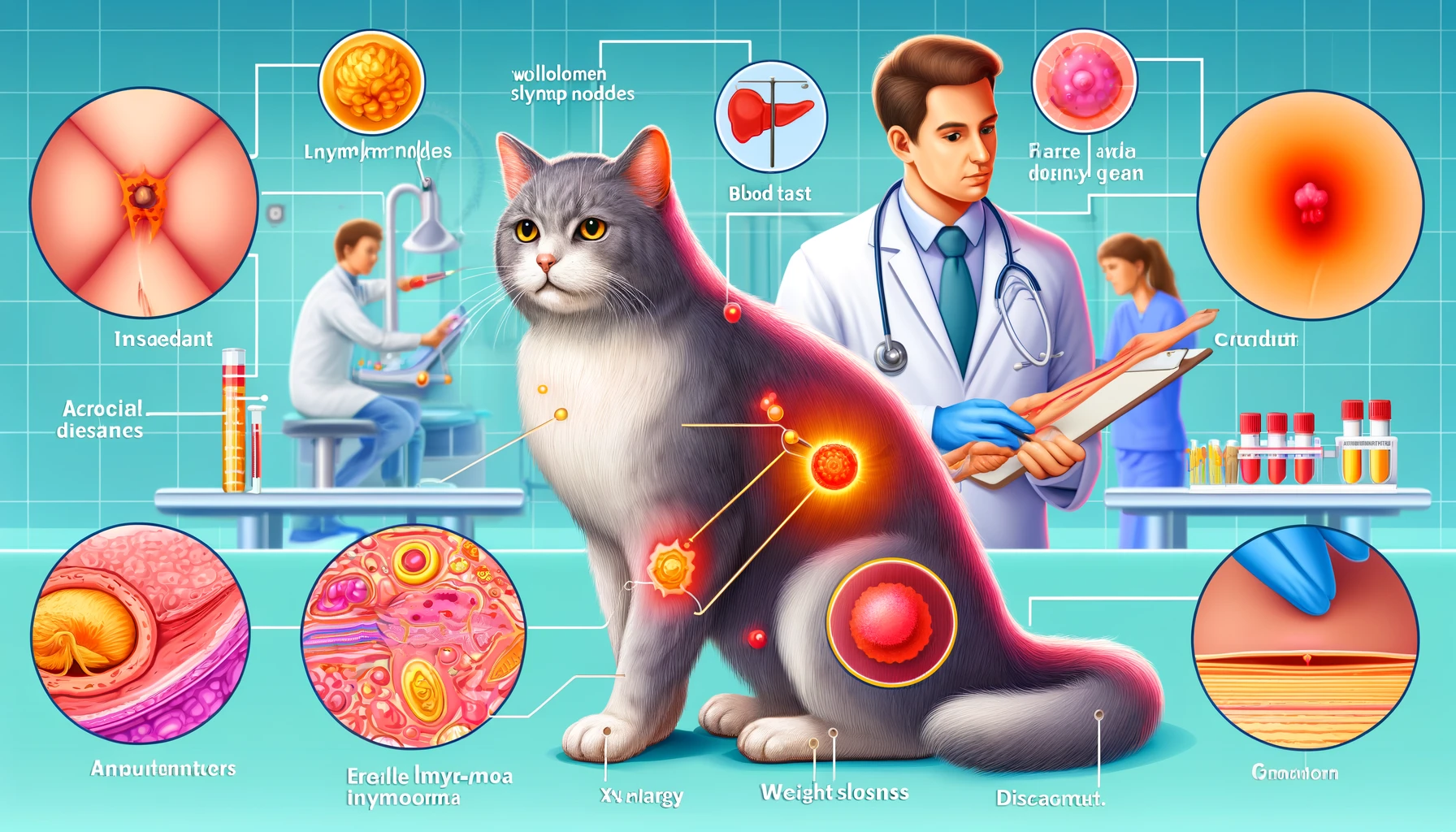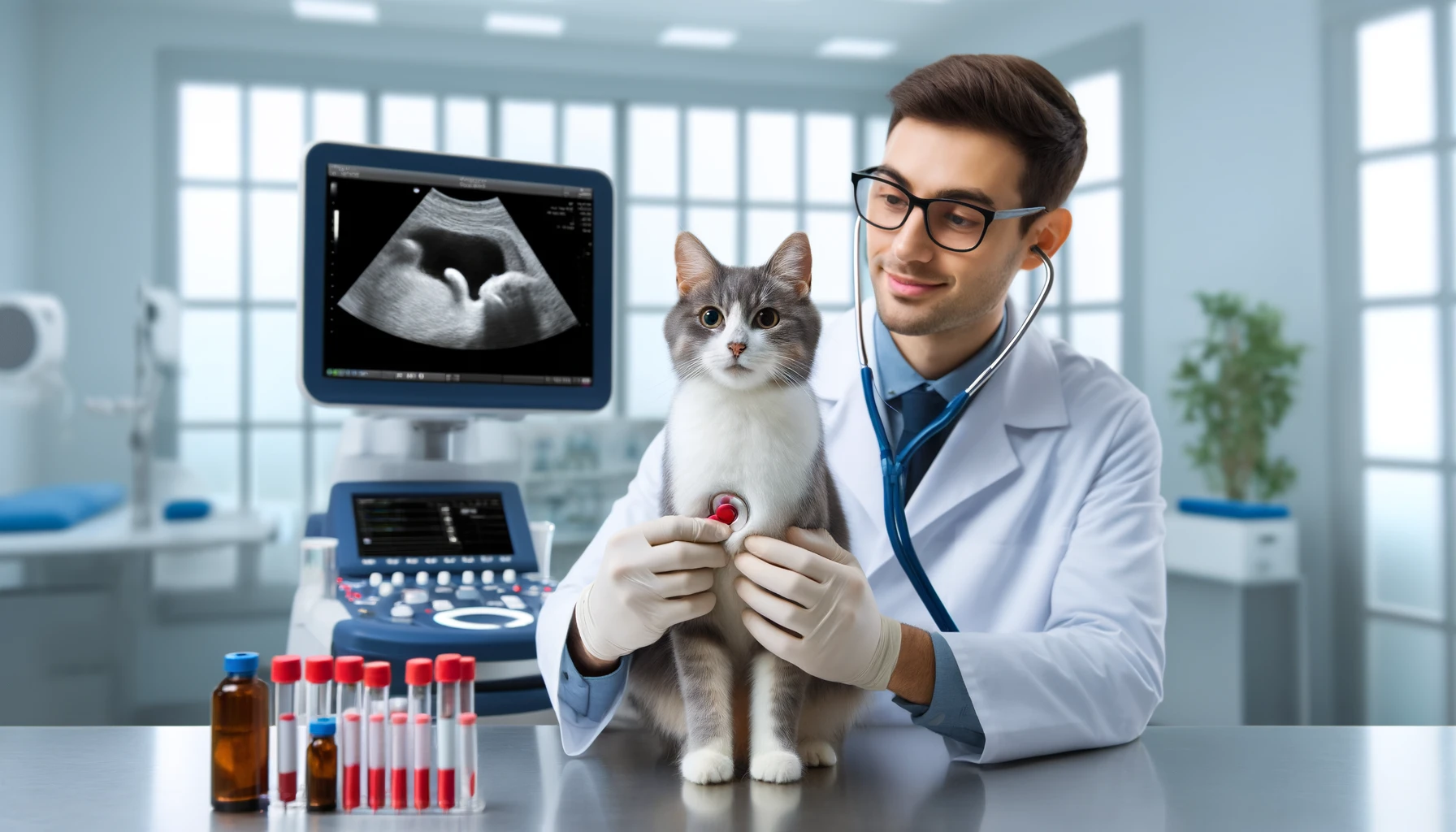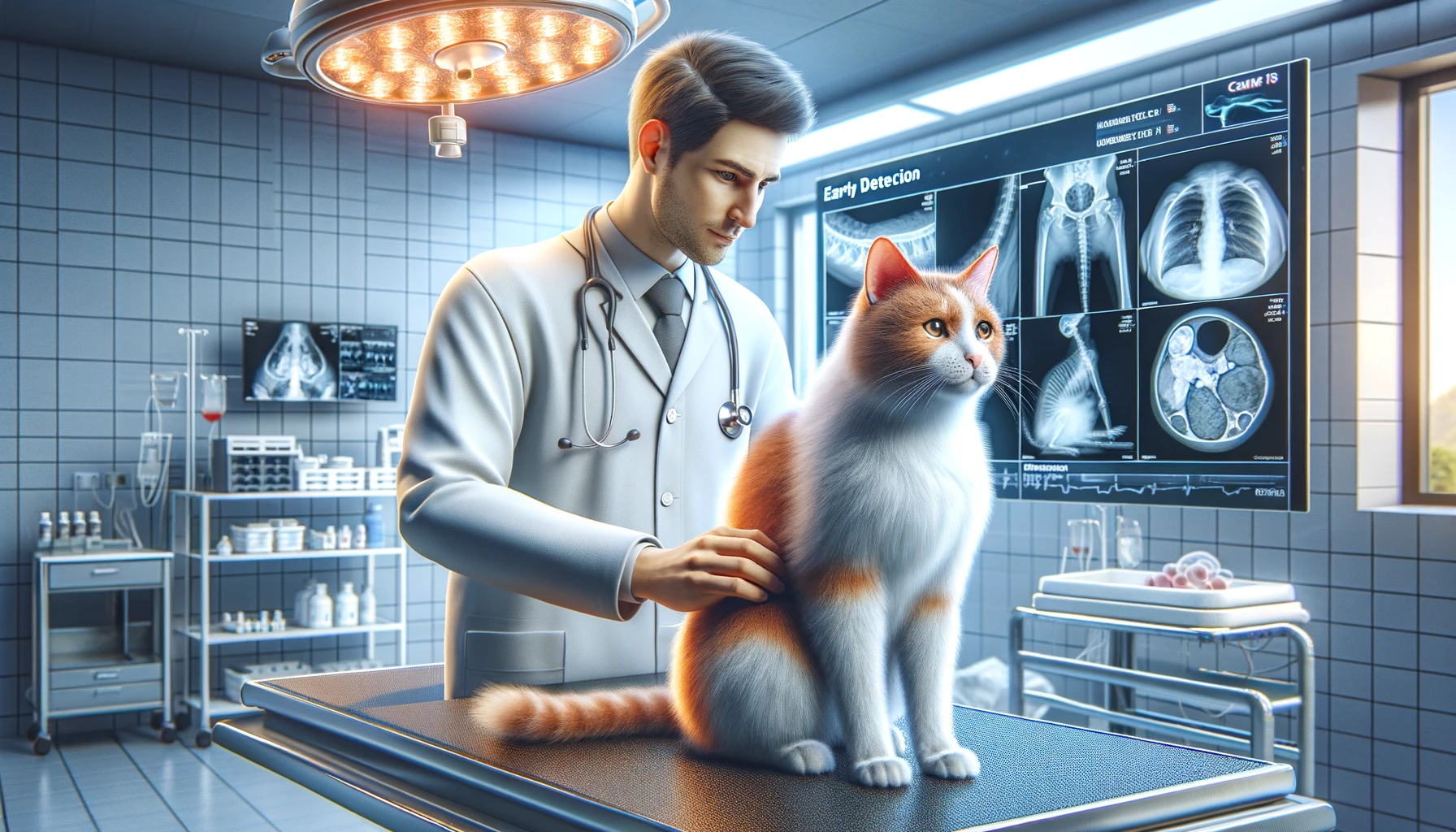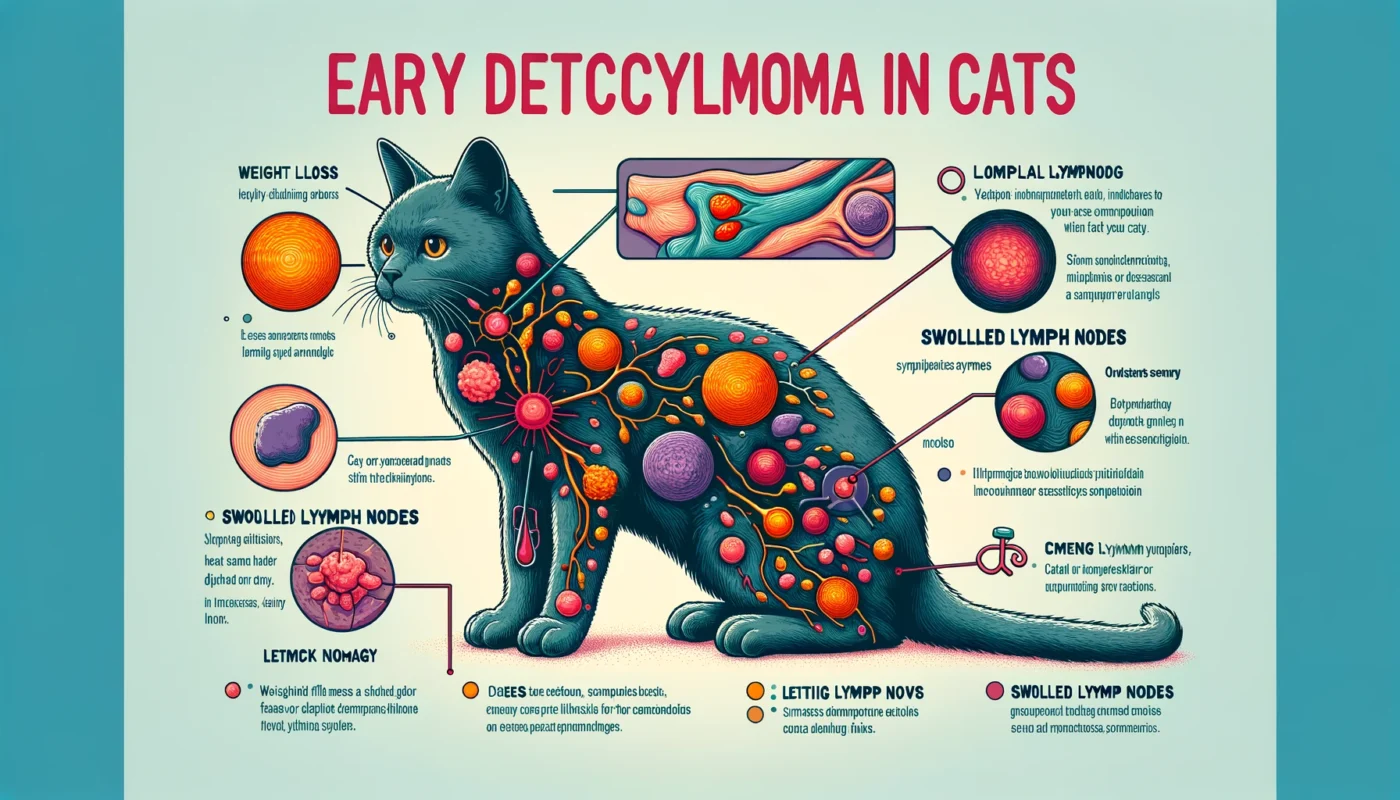Introduction
Early Detection of Lymphoma in Cats
Early Detection of Lymphoma in Cats is the most common disease in felines. It starts in the lymphocytes, which are a sort of white platelet crucial to the resistant framework. This harmful disease can significantly affect various parts of the feline body, including the lymph nodes, gastrointestinal tract, liver, spleen, and bone marrow. Perceiving the nature and ramifications of feline lymphoma is critical for every little dog owner and veterinarian to ensure convenient and compelling treatment.
Importance of Early Detection
Early Detection of Lymphoma in Cats: Identifying lymphoma in felines can greatly improve the chances of a successful cure and the executives. Perceiving early endless signs empowers flash-off veterinary mediation, which is fundamental for expanding the feline’s lovely ways of life. The earlier the examination, the greater the number of accessible treatment choices, habitually resulting in improved outcomes. Subsequently, it’s fundamental for feline owners to be educated and cautious about this infection.
How Common is Detection of Lymphoma in Cats?
Early Detection of Lymphoma in Cats is chargeable for roughly 30% of all tom feline diseases, making it a typical well-being concern. Albeit the specific reason for feline lymphoma isn’t grasped, sure possibility components, comprehensive of cat leukaemia infection (FeLV) and cat immunodeficiency infection (FIV), had been connected with a superior pervasiveness of this malignant growth. Consciousness of the commonness and chance components connected with lymphoma is fundamental for early discovery and preventive measures. Also, visit my other post-Equine Infectious Anemia Symptoms Discover 5 Key Signs to Watch For

What are the Side effects of Lymphoma in Felines?
General Side effects
Felines with lymphoma can display many side effects, which can vary essentially based on the area and level of the disease. Typical side effects include torpidity, weight reduction, diminished craving, and heaving. These well-known signs can demonstrate various medical problems, making it fundamental to seek veterinary guidance for an exact visualization.
Specific Symptoms Based on Lymphoma Type
The side effects of lymphoma can be more specific depending on the sort and region of the lymphoma. For example, gastrointestinal lymphoma regularly causes side effects, such as runs, heaving, and stomach irritation. In evaluation, mediastinal lymphoma, which impacts the chest locale, can likewise cause breathing issues and hacking. Perceiving those side effects can help find the sort and amount of lymphoma, supporting fitting cure arranging.
How is Lymphoma Diagnosed in Cats?
Physical Examination
The indicative strategy for cat lymphoma typically begins with a severe real test under the guidance of a veterinarian. During the test, the veterinarian will check for signs and side effects of contamination, like enlarged lymph hubs, gut hundreds, or breath irregularities. Clinical records and comments on the feline’s side effects are basic additions to the underlying evaluation.
Diagnostic Tests and Procedures
A few indicative evaluations are utilized to confirm a lymphoma examination. Blood evaluations can uncover irregularities in blood portable counts and different affliction markers. Imaging procedures, such as X-beams and ultrasounds, help distinguish the spot and degree of cancers. Acceptable needle desire or biopsy of impacted tissues bears the cost of authoritative certification using tiny tests of the cells. These analytic hardware are valuable assets in arranging the illness and deciding the best treatment procedure.
Importance of Veterinary Expertise
Precise examination and treatment of lymphoma require veterinary data and specific demonstrative work. Veterinary oncologists specializing in malignant growth treatment play a vital role in developing an exhaustive cure plan tailored to each feline’s needs. Their insight guarantees that each part of the problem is entirely assessed, prompting more impressive and centred treatment methods.
What are the Risk Factors for Lymphoma in Cats?
Genetic Predisposition
Certain types of felines might have a hereditary inclination to develop lymphoma. While it is occasionally difficult to distinguish explicit hereditary markers, a few varieties, like Siamese felines, seem to have a hiriskamble. Understanding hereditary inclination helps assess the probability of lymphoma and can direct well-being in dangerous breeds.
Environmental Factors
Natural variables, including exposure to hand-down cigarette smoke, certain synthetic compounds, and pesticides, have been connected to an increased risk of lymphoma in felines. Diminishing exposure to these destructive substances can help lessen the frequency of lymphoma. Keeping a protected and sound climate is urgent for the general prosperity of pets.
Age and Breed Considerations
Lymphoma is more ordinarily analyzed in moderately aged to more established felines, even though it can happen at any stage. Furthermore, certain varieties, like Siamese and other Oriental varieties, are more inclined to develop lymphoma. Monitoring these ages and raising concerns can help in early discovery and convenient mediation.

How Can Owners Help in Early Detection?
Monitoring Health and Behavior
Feline owners play an essential role in early discovery by intently observing their pets for any progression that is well conducted. Traditional perceptions of dietary patterns, weight, action levels, and attitude can assist with distinguishing early indications of ailment. Any strange side effects should provoke a visit to the veterinarian for additional assessment.
Regular Veterinary Check-ups
Routine veterinary check-America is vital for early recognition of lymphoma and medical problems. Veterinarians can finish assessments and indicative tests to detect anomalies during these visits. Standard wellness screenings, particularly for more established felines and individuals at higher gamble, are significant for keeping up Tomh Tom fewell-bringing
Being taught about the advance notice signs and side effects of lymphoma can engage feline owners to look for veterinary consideration expeditiously. Side effects comprehensive of ceaseless retching, loose bowels, weight decrease, and respiratory hardships need to in no way, shape, or form be disregarded. Early Detection of Lymphoma in Cats mediation can prompt extra successful cures and improved results for the impacted feline.
What are the Treatment Choices for Cat Lymphoma?
Chemotherapy
Chemotherapy is the most typical treatment for tom feline Early Detection of Lymphoma in Cats. It includes the utilization of medications to target and kill carcinogenic cells. While chemotherapy can have feature results, many felines endure the cure well and appreciate significant measured upgrades of their top-notch life. The exact chemotherapy convention is adjusted to the sort and phase of lymphoma.
Radiation Therapy
Early Detection of Lymphoma in Cats radiation treatment is another therapy decision, particularly for confined types of lymphoma. It incorporates the use of high-energy radiation to break disease cells. Radiation cure can be compelling in diminishing growth length and lightning signs, and it is regularly utilized in conjunction with chemotherapy for complete disease control.
Supportive Care and Palliative Options
Steady consideration aspirations to further develop the feline’s fantastic presence through dealing with signs and side effects and offering solace. This can comprise pain administration, dietary help, and other soothing measures for felines with cutting-edge or untreatableEarly Detection of Lymphoma in Cats—palliative consideration centres around holding the decent possible incredible of life for the last time.
What is the Prognosis for Cats with Lymphoma?
Factors Affecting Prognosis
The anticipation for felines with lymphoma relies upon different elements, including the kind and phase of lymphoma, the feline’s standard wellness, and the reaction to treatment: early discovery and severe treatment, by and large, outcome in improved results. Veterinary oncologists can give a more accurate forecast in light of individual case evaluations.
Long-Term Management and Quality of Life
Long haul control of tom feline lymphoma involves normal veterinary test-ups, progressing cure, and following for repeat. With the proper consideration, many felines can encounter an incredible, extraordinary way of life despite their guess. Continuous help and reports from the veterinary team are essential to deal with the illness.
Advances in Treatment and Research
Progresses in veterinary oncology continue to develop treatment options and results for felines with lymphoma. Investigating new treatment options, such as designated medicines and immunotherapy, offers a craving for considerably higher analysis and a lovely life inside the predetermination. Remaining proficient with the cutting-edge characteristics in veterinary restorative medication can help feline proprietors and their pets. Also, visit my other post, 5 Proven Canine Parvovirus Treatment Options for Puppies to Ensure Recovery.

FAQs approximately Lymphoma in Cats
Can a blood test come across lymphoma in cats?
A blood test alone can not conclusively analyzeEarly Detection of Lymphoma in Cats in felines. Yet, it can screen irregularities that remember changes in white platelet counts, which may suggest lymphoma’s presence. Similar to biopsies or imaging, extra-symptomatic evaluations are fundamental for a definitive examination.
What is considered early detection of lymphoma?
Early recognition of Early Detection of Lymphoma in Cats incorporates recognizing the infection at its prime degrees, frequently through routine veterinary investigation in the U.S., and mindful observation of unpretentious adjustments in the feline’s behaviour, request for food, or wellness. Early mediation ordinarily offers higher cure choices and results.
How quickly does lymphoma develop in cats?
The movement of Early Detection of Lymphoma in Cats in felines can shift extensively; a few structures can help quickly within weeks, even as others may improve more noticeably gradually over months. Early identification and cure are essential to adapting to the issue effectively.


